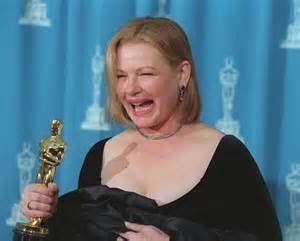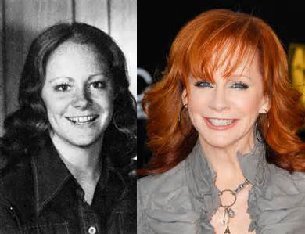Colorado (/ˌkɒləˈrædoʊ, -ˈrɑːdoʊ/ ⓘ KOL-ə-RAD-oh, -RAH-doh, other variants) is a state in the Mountain West subregion of the Western United States. Colorado borders Wyoming to the north, Nebraska to the northeast, Kansas to the east, Oklahoma to the southeast, New Mexico to the south, Utah to the west, and meets Arizona to the southwest at the Four Corners. Colorado is noted for its landscape of mountains, forests, high plains, mesas, canyons, plateaus, rivers, and desert lands. Colorado is one of the Mountain States and is often considered to be part of the southwestern United States. The high plains of Colorado may be considered a part of the midwestern United States. It encompasses most of the Southern Rocky Mountains, as well as the northeastern portion of the Colorado Plateau and the western edge of the Great Plains. Colorado is the eighth most extensive and 21st most populous U.S. state. The United States Census Bureau estimated the population of Colorado at 5,877,610 as of July 1, 2023, a 1.80% increase since the 2020 United States census.
Colorado flag...
The region has been inhabited by Native Americans and their ancestors for at least 13,500 years and possibly much longer. The eastern edge of the Rocky Mountains was a major migration route for early peoples who spread throughout the Americas. In 1848, much of the Nuevo México region was annexed to the United States with the Treaty of Guadalupe Hidalgo. The Pike's Peak Gold Rush of 1858–1862 created an influx of settlers. On February 28, 1861, U.S. President James Buchanan signed an act creating the Territory of Colorado, and on August 1, 1876, President Ulysses S. Grant signed Proclamation 230 admitting Colorado to the Union as the 38th state. The Spanish adjective "colorado" means "colored red" or "ruddy". Colorado is nicknamed the "Centennial State" because it became a state one century (and four weeks) after the signing of the United States Declaration of Independence.
Denver....
Denver is the capital, the most populous city, and the center of the Front Range Urban Corridor. Colorado Springs is the second most populous city. Residents of the state are known as Coloradans, although the antiquated "Coloradoan" is occasionally used. Major parts of the economy include government and defense, mining, agriculture, tourism, and increasingly other kinds of manufacturing. With increasing temperatures and decreasing water availability, Colorado's agriculture, forestry, and tourism economies are expected to be heavily affected by climate change.
History
The region that is today the State of Colorado has been inhabited by Native Americans and their Paleoamerican ancestors for at least 13,500 years and possibly more than 37,000 years. The eastern edge of the Rocky Mountains was a major migration route that was important to the spread of early peoples throughout the Americas. The Lindenmeier site in Larimer County contains artifacts dating from approximately 8720 BCE. The Ancient Pueblo peoples lived in the valleys and mesas of the Colorado Plateau. The Ute Nation inhabited the mountain valleys of the Southern Rocky Mountains and the Western Rocky Mountains, even as far east as the Front Range of the present day. The Apache and the Comanche also inhabited the Eastern and Southeastern parts of the state. In the 17th century, the Arapaho and Cheyenne moved west from the Great Lakes region to hunt across the High Plains of Colorado and Wyoming.
Pikes Peak...
The Spanish Empire claimed Colorado as part of Nuevo México. The U.S. acquired the territorial claim to the eastern Rocky Mountains with the Louisiana Purchase from France in 1803. This U.S. claim conflicted with the claim by Spain to the upper Arkansas River Basin. In 1806, Zebulon Pike led a U.S. Army reconnaissance expedition into the disputed region. Colonel Pike and his troops were arrested by Spanish cavalrymen in the San Luis Valley the following February, taken to Chihuahua, and expelled from Mexico the following July.
The U.S. relinquished its claim to all land south and west of the Arkansas River and south of 42nd parallel north and west of the 100th meridian west as part of its purchase of Florida from Spain with the Adams-Onís Treaty of 1819. The treaty took effect on February 22, 1821. Having settled its border with Spain, the U.S. admitted the southeastern portion of the Territory of Missouri to the Union as the state of Missouri on August 10, 1821. The remainder of Missouri Territory, including what would become northeastern Colorado, became an unorganized territory and remained so for 33 years over the question of slavery. After 11 years of war, Spain finally recognized the independence of Mexico with the Treaty of Córdoba signed on August 24, 1821. Mexico eventually ratified the Adams–Onís Treaty in 1831. The Texian Revolt of 1835–36 fomented a dispute between the U.S. and Mexico which eventually erupted into the Mexican–American War in 1846. Mexico surrendered its northern territory to the U.S. with the Treaty of Guadalupe Hidalgo after the war in 1848; this included much of the western and southern areas of the current state of Colorado.
Statehood
The United States Congress passed an enabling act on March 3, 1875, specifying the requirements for the Territory of Colorado to become a state.[23] On August 1, 1876 (four weeks after the Centennial of the United States), U.S. President Ulysses S. Grant signed a proclamation admitting Colorado to the Union as the 38th state and earning it the moniker "Centennial State".[3]
Climate
The climate of Colorado is more complex than states outside of the Mountain States region. Unlike most other states, southern Colorado is not always warmer than northern Colorado. Most of Colorado is made up of mountains, foothills, high plains, and desert lands. Mountains and surrounding valleys greatly affect the local climate. Northeast, east, and southeast Colorado are mostly the high plains, while Northern Colorado is a mix of high plains, foothills, and mountains. Northwest and west Colorado are predominantly mountainous, with some desert lands mixed in. Southwest and southern Colorado are a complex mixture of desert and mountain areas.
If you want to read a whole lot more, go here: https://en.wikipedia.org/wiki/Colorado
- SERVES
- 6
- COOK TIME
- 30 Min
The creamy chicken filling isn't the only thing that "bubbles up" in this Easy Chicken Bubble Bake. When you set it to bake with the biscuits on top, you'll find that the whole casserole "rises" to the occasion. What's the occasion? A fantastic evening dinner!
- 2 (10-1/2-ounce) cans cream of chicken soup, undiluted
- 1 cup milk
- 1/2 teaspoon dried thyme
- 1/2 teaspoon salt
- 1/4 teaspoon black pepper
- 1 (16-ounce) package frozen chopped mixed vegetables (broccoli, cauliflower, and carrots)
- 3 cups shredded cooked rotisserie chicken
- 1 (12-ounce) can refrigerated biscuits, each biscuit cut into quarters
- 2 tablespoons butter, melted
- Preheat oven to 375º. Coat a 9- x 13-inch baking dish with cooking spray.
- In a large bowl, combine soup, milk, thyme, salt, and pepper; mix well. Stir in vegetables and chicken. Place mixture in baking dish.
- Bake 15 minutes, then remove from oven.
- Meanwhile, in a medium bowl, combine biscuits and butter; toss until evenly coated. Arrange biscuits over chicken mixture. Bake 15 to 18 more minutes, or until biscuits are golden and casserole is bubbly.
1905 – Marlin Perkins, American zoologist and television host (d. 1986)
1948 – Dianne Wiest, American actress
1955 – Reba McEntire, American singer and actress
1970 – Vince Vaughn, American actor
1986 – Lady Gaga, American singer and songwriter
HOW TO OBSERVE
- Master eating with chopsticks.
- Serve each meal on a stick. French toast for breakfast? Serve it cut up on toothpicks. Salad for lunch? Slide all the fixings on a skewer. The same goes for supper. Be creative and involve the whole family in the planning. Just don’t serve soup.
- Challenge the family to create a name as many foods on a stick as possible.



.jpg)


.jpg)








